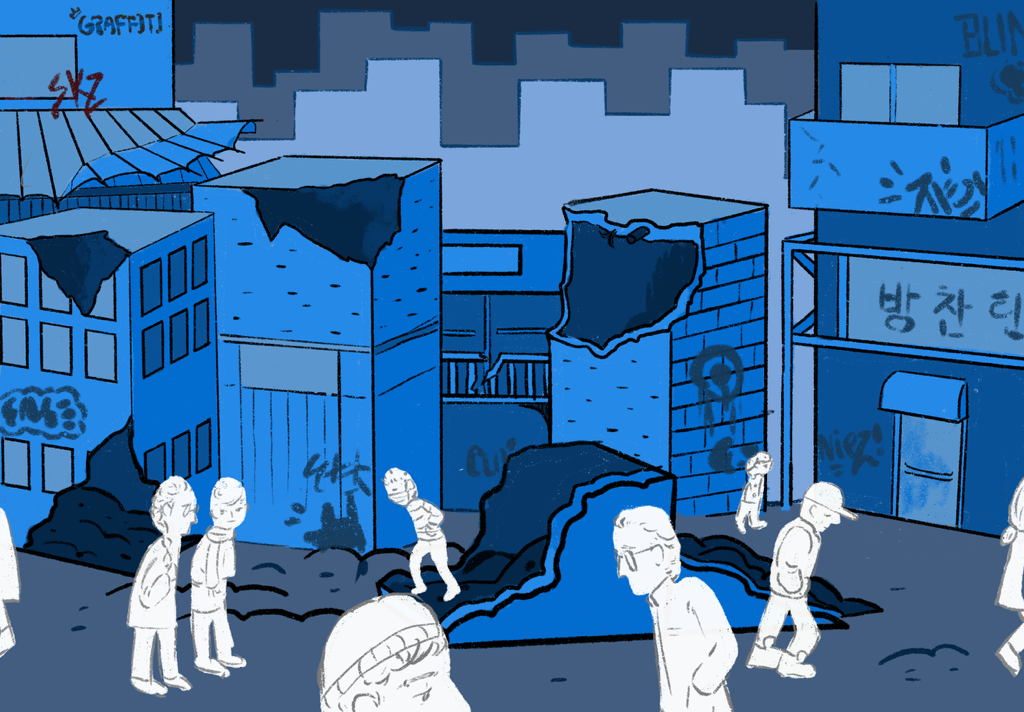By Francesca Howard ’26
Recent initiatives of strict federal law enforcement and the creation of homeless shelters in New York City has helped to reduce misdemeanors and felonies. And yet, the safety of residents in the Big Apple is not guaranteed. Not only does aggressive policing contribute to increased crimes, but current policies neglect NYC’s true adversary: its outdated infrastructure.
It’s undoubtable that crime rates have diminished over the past few decades, whether that be the 435,405 misdemeanors or 184,652 seven major felonies in 2000, compared to 273,599 and 126,589 in 2022, respectively. In fact, Mayor Eric Adams declared New York City to be the “safest city in America,” citing significant reductions in crime rates.
And yet, these statistics fail to explain the perception of danger amongst residents, with concerns with Covid-19 have been surpassed by fear of violence as the main reason for why workers won’t return to their Manhattan offices or ride on public transport. The ominous sound of footsteps lurking behind you. The echo of sirens filling the night. The media chattering on about homicides, arson, and sexual assault.
It may seem at first glance that more robust policing efforts would be the solution. In fact, this is exactly what Adams has called for, whether its the continual hirings of police recruits or the persistent increase in N.Y.P.D. budget. In reality, not only is over-policing a temporary “fix” to quell to crimes, but there’s to much that can go wrong.
The most prominent flaw in over-policing is improper disciplinary action of officers. The police in America have long been criticized for the inability to adequately discipline their officers, whether it be an inordinate use of force or unfairly threatening an arrest. And even now, the N.Y.P.D. fails to properly address civilian complaints of unjust policing, as illustrated by Commisioner Keechant Sewell’s decision to decline more than 300 disciplinary reccomendations sent by the Civilian Complaint Review Board. This remission of guilt is common, as most departments restrict disclosure of how many and how severe disciplinary action for police misconduct is.
Truthfully, the lack of safety in urban environments is likely linked to the deterioration of infrastructure and, conversely, the effects of gentrification.
Though the public may associate gentrification with improvements to infrastructure, as the attraction of higher-income residents tends to bring along renovations to buildings, investments to public transit, and improvements in amenities. And yet, New York City is in a constant state of deterioration. As one of the world’s most important cities, there’s no opportunity for officials to carry out large operations to overhaul the outdated infrastructure. The omnipresent scaffolding and flooded subways attribute to this phenomenon.
Urban areas affected by decay are no pretty sight: vacant parking lots, dilapidated buildings, and graffiti-laden walls. This blatant disregard for infrastructure upkeep is about more than appearance; it signals a lack of concern for the area’s welfare. It sends a message that further damage is inconsequential in an already deteriorating community. Neglected and poorly maintained areas also cause stress and anxiety among residents. In despair, some may resort to crime to express their frustration or try to earn enough to live somewhere nicer.
Meanwhile, clean and well-maintained environments promote adherence to societal norms and laws. Beautiful and functional public spaces encourage positive social interactions and community engagement. Residents who like their community will look out for and be less likely to harm one another.
So we know the problem, but how do we fix it? A better way to sustainably reduce crime and make residents feel safer is to prioritize inclusive and socially responsible city security developments.
Again, it all starts with infrastructure. There are numerous ways to end city crime by simply restructuring the city. Improving security systems, cleaning up trash-ridden streets, ventilating buildings to prevent the stench of marijuana, repairing the underground subways, and exterminating the abundant rat population.
Moreover, a University of Chicago study found that improved street lighting can significantly reduce violent crime. Brighter streets make law enforcement more visible and effective in their patrols, deterring unlawful conduct. Well-lit areas also encourage more pedestrian activity, creating an informal surveillance system through the presence of more onlookers.
To reduce crime, we must repair damaged infrastructure, remove debris, and improve street aesthetics and illumination. This simple yet effective strategy will transform urban areas into safer and more inviting spaces. In the long run, such improvements will help achieve broader urban renewal and revitalization goals. We need to blend these practical measures with strategies that address the intangible but very real fears and anxiety of those living in cities.
However, we must find ways to develop neighborhoods without gentrifying them and returning to square one. As cities evolve, the divide between the rich and poor becomes more visible, — the contrast in the quality of housing, education, and healthcare — fueling resentment among those who feel cheated by the system.
We mustn’t overlook the well-being of the residents themselves in the process. The only way to prevent crime more effectively while avoiding the further gentrification of urban areas is to involve residents in the decision-making. Community-led developments should meet the needs of existing residents, not marginalize them. Neighborhoods should feel safe and comfortable, but that must be achieved through dialogue, collaboration, and inclusivity to ensure those benefits apply to all.





